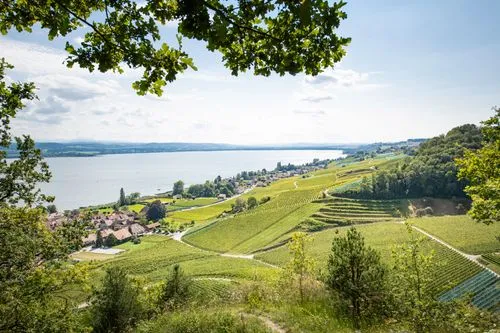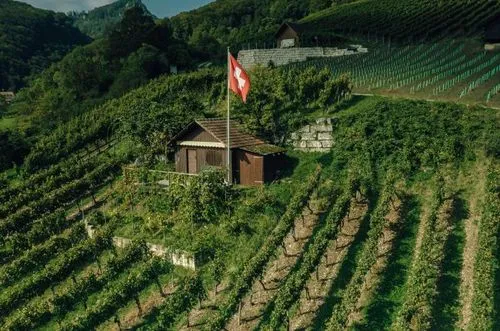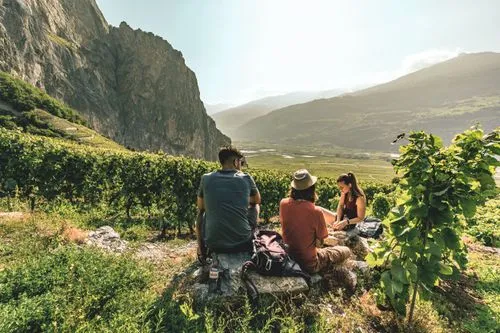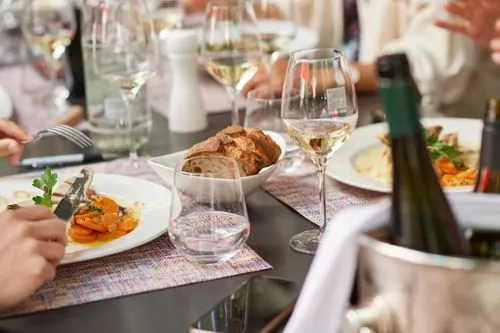Cabernet Sauvignon
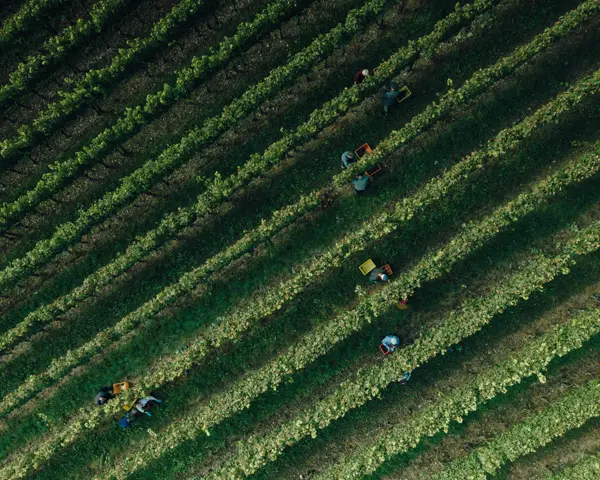
Grape variety Red
Serving temperature:
16-18°C
Cabernet Sauvignon fact sheet
Area under cultivation in Switzerland: approximately 64 hectares
The taste of Cabernet Sauvignon
Aromas of blackcurrant, cherry, cedar and green pepper are typical of Cabernet Sauvignon. The wines have good structure, concentrated tannins (which give a slight furry mouthfeel) and relatively high acidity.
When young, Cabernet can be angular and distinctive, but with maturity (after 5–7 years), it becomes more harmonious, mellow and complex, with notes of tobacco, leather and black tea.
If you like powerful wines such as Syrah or Merlot, you will undoubtedly also be won over by a Swiss Cabernet Sauvignon.
Cabernet Sauvignon goes well with these dishes
A classic grilled rib eye steak is perfect for Cabernet – the caramelised aromas and fat soften the aggressive tannins. It is equally delicious with a rack of lamb in a herb crust, especially with an older wine.
Hard, mature cheeses such as Sbrinz or Gruyère are also excellent companions, with the depth of the wine holding its own against the strong flavour of the cheese. More surprisingly, dark chocolate with a high cocoa content can also be a flattering pairing.
However, Cabernet Sauvignon is less successful with spicy or very light dishes, where the wine can quickly become overpowering.
History and culture of Cabernet Sauvignon
This grape variety originated in Bordeaux, but is now grown all over the world. In Switzerland, it has been cultivated since the 1970s, generally in small vine parcels and often blended with Merlot or other grape varieties.
It thrives in warm, well-ventilated locations with well-drained soils. In cool or overly humid regions, it does not ripen optimally and develops green, unbalanced aromas.
Distribution of Cabernet Sauvignon in Switzerland
Cabernet Sauvignon is most commonly found in Valais and Ticino, where it benefits from warm temperatures. There are also small areas under cultivation in Geneva, which often produce exciting blends with Merlot. As a single varietal wine, it is more of a speciality.
FAQ: Frequently asked questions about the Cabernet Sauvignon grape variety
Yes, but infrequently. More often, it is part of blends, for example with Merlot or Cabernet Franc.
Absolutely: good vintages can age for 10 years or more without any problem. The tannins soften, and the wine develops greater depth and elegance.
Because it produces powerful wines that can age for years and which are perfect for fine dining, and because it can adapt to many climates. In Switzerland, it nevertheless remains relatively unknown to connoisseurs.
To visit our site, you must be of legal drinking age in your country of residence.
